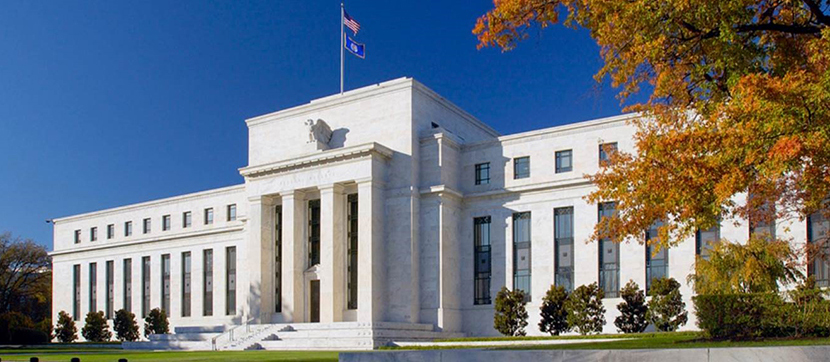
Fed Sees ‘Substantial’ Economic Progress This Year

The Federal Open Market Committee yesterday acknowledged a fast-heating U.S. economy, but said it did not expect increases in the federal funds rate before 2023.
The FOMC said the effects of the coronavirus pandemic continue to cause “tremendous human and economic hardship” in the U.S. and around the world. It said while economic growth remains dependent on the continued response to the pandemic, it nonetheless acknowledged indicators of economic activity and employment have “turned up” recently, and that overall financial conditions remain “accommodative.”
“The FOMC’s latest projections show that more members anticipate a first rate hike in 2023, even while the median member sees rates unchanged through that year,” said Mike Fratantoni, Chief Economist with the Mortgage Bankers Association. “This reflects the current expectation of more rapid economic growth, faster movement towards full employment, and a higher rate of inflation as a result of the American Rescue Plan and the growing success of the vaccine rollout. MBA’s forecast is aligned with this expectation of a rapidly improving economy through the remainder of 2021.”
Fratantoni said the FOMC statement did not indicate any changes in the Fed’s plans to continue to purchase $120 billion per month of longer-term Treasuries and mortgage-backed securities. “However, we do expect that the economy will make ‘substantial further progress’ by the end of this year, which likely means the potential for the beginning, or at least the announcement, of a tapering of these QE purchases,” he said.
Although housing construction slowed in February, MBA continues to see a very strong housing market, with mortgage applications to buy a home increasing, even as refinance demand wanes. “While mortgage rates are likely to move somewhat higher, the purchase market remains on track for a record year,” Fratantoni said.
“Specifically, the FOMC now looks for stronger GDP growth, higher inflation and lower unemployment in 2021 than it did three months ago,” said Jay Bryson, Chief Economist with Wells Fargo Securities, Charlotte, N.C. “Although most FOMC participants continue to believe that it will be appropriate to keep rates on hold through 2023, a few committee members look for rate hikes next year and in 2023.”
The full FOMC statement appears below:
“The Federal Reserve is committed to using its full range of tools to support the U.S. economy in this challenging time, thereby promoting its maximum employment and price stability goals.
“The COVID-19 pandemic is causing tremendous human and economic hardship across the United States and around the world. Following a moderation in the pace of the recovery, indicators of economic activity and employment have turned up recently, although the sectors most adversely affected by the pandemic remain weak. Inflation continues to run below 2 percent. Overall financial conditions remain accommodative, in part reflecting policy measures to support the economy and the flow of credit to U.S. households and businesses.
“The path of the economy will depend significantly on the course of the virus, including progress on vaccinations. The ongoing public health crisis continues to weigh on economic activity, employment, and inflation, and poses considerable risks to the economic outlook.
“The Committee seeks to achieve maximum employment and inflation at the rate of 2 percent over the longer run. With inflation running persistently below this longer-run goal, the Committee will aim to achieve inflation moderately above 2 percent for some time so that inflation averages 2 percent over time and longer‑term inflation expectations remain well anchored at 2 percent. The Committee expects to maintain an accommodative stance of monetary policy until these outcomes are achieved. The Committee decided to keep the target range for the federal funds rate at 0 to 1/4 percent and expects it will be appropriate to maintain this target range until labor market conditions have reached levels consistent with the Committee’s assessments of maximum employment and inflation has risen to 2 percent and is on track to moderately exceed 2 percent for some time. In addition, the Federal Reserve will continue to increase its holdings of Treasury securities by at least $80 billion per month and of agency mortgage‑backed securities by at least $40 billion per month until substantial further progress has been made toward the Committee’s maximum employment and price stability goals. These asset purchases help foster smooth market functioning and accommodative financial conditions, thereby supporting the flow of credit to households and businesses.
“In assessing the appropriate stance of monetary policy, the Committee will continue to monitor the implications of incoming information for the economic outlook. The Committee would be prepared to adjust the stance of monetary policy as appropriate if risks emerge that could impede the attainment of the Committee’s goals. The Committee’s assessments will take into account a wide range of information, including readings on public health, labor market conditions, inflation pressures and inflation expectations, and financial and international developments.
“Voting for the monetary policy action were Jerome H. Powell, Chair; John C. Williams, Vice Chair; Thomas I. Barkin; Raphael W. Bostic; Michelle W. Bowman; Lael Brainard; Richard H. Clarida; Mary C. Daly; Charles L. Evans; Randal K. Quarles; and Christopher J. Waller.”
